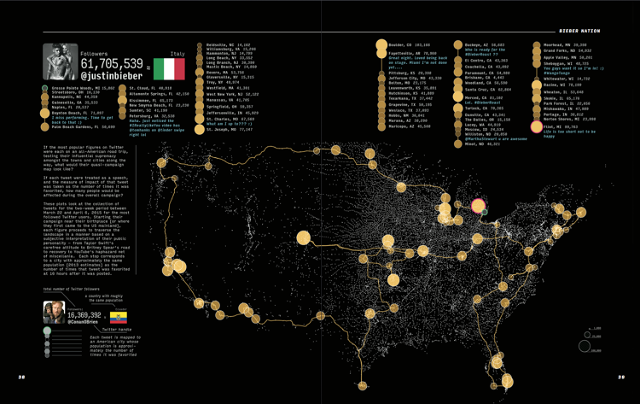a surprising New Journal by means of one of the World’s top information Viz Studios
OCR Journal #001 will print just 500 copies, every with a singular visualization on the cover.
could 19, 2015
The administrative center for creative analysis (OCR) is what Noa Younse calls “a tiny, artificially lit, warmth-challenged Chinatown shoebox of a space.” but in that administrative center, designers are generating one of the most most enjoyable knowledge artwork and visualization today—from a sculpture that charges Shakespeare to tool that analyzes digital spies.
Now, OCR has revealed its first e book, the minimally named OCR Journal #001. For knowledge viz nerds who’re aware of similar print tasks like the Feltron file, it’s an fast collector’s item. The studio will print a limited run of just 500 copies, and every will have a unique, fluorescent cover. What information these covers in truth bring, OCR received’t say, beyond that they’re associated to one of the vital studio’s earlier tasks.

It’s a fun gimmick, certain, but it’s additionally a way to rejoice print as a medium—a medium with which OCR is much less acquainted than monitors. OCR has created algorithms inside the 11th of September Museum, constructed the matrix of chatroom surveillance displays throughout the The San Jose Museum of art, and painted the university of Texas with the phrases of Walter Cronkite.
“Print is attractive as a result of it is outside of our relief zone. while our commonplace work is dynamic and time-based, print requires us to step back and select a couple of particular phrases and pictures to symbolize an idea,” explains OCR data dressmaker Ian Ardouin-Fumat. “The journal also creates a space for the loads of visible experiments which are a part of our course of and don’t make it to the true world. The exploration phase is among the most fun parts of our work, so we wished to point out it off and spark some discussion round it.”
within, the e-book is a retrospective of the studio’s work over the past two years. nevertheless it’s less the work that you’ve seen, and more work that you haven’t—various explorations and aspect projects that the studio’s workforce is concerned with. The journal had been deliberate due to the fact OCR’s inception. however my hunch is that it’s like a steam valve for the studio’s creativity—a spot to drop tasks out of doors the realm of their day job.

that includes some actual crowd-pleasers. for instance, a map referred to as Bieber Nation imagines the tweets of celebrities as a type of on-the-street political campaign; probably the most favorited tweets of Taylor Swift and others are equated with the populations of small towns.
different tasks are framed under the lens of research—as in, this journal is the result of OCR researching itself, mining its own data and pulling out insights. On such visualization is called A Phenology of tasks, and it maps the quantity and frequency of Slack and Github updates that the OCR workforce made while engaged on commissioned tasks. that is OCR mapping much the effort they put into work they created for purchasers.
“in terms of transparency, most of it used to be in provider of seeing if there were any patterns in the way in which that we speak about and produce tasks,” Ardouin-Fumat says. And OCR did examine just a few things: Most significantly, that while only some individuals might code a project, the dialogue surrounding it might steadily contain the entire team.

some other piece of self-scrutiny is Ardouin-Fumat’s collection of images Collective Unconsciousness. It compares sci-fi interfaces, like those of Minority file, with exact work that OCR produced. The similarities had been now and again built intentionally, occasionally (potentially) unconsciously. Ardouin-Fumat makes no distinction between which were intentional allusions, and which were unintended knockoffs, and that grey house is a part of the fun.
if you wish to get hold of a copy of the journal, it’s to be had for pre-order now for $35.
quick company , learn Full Story
(151)














